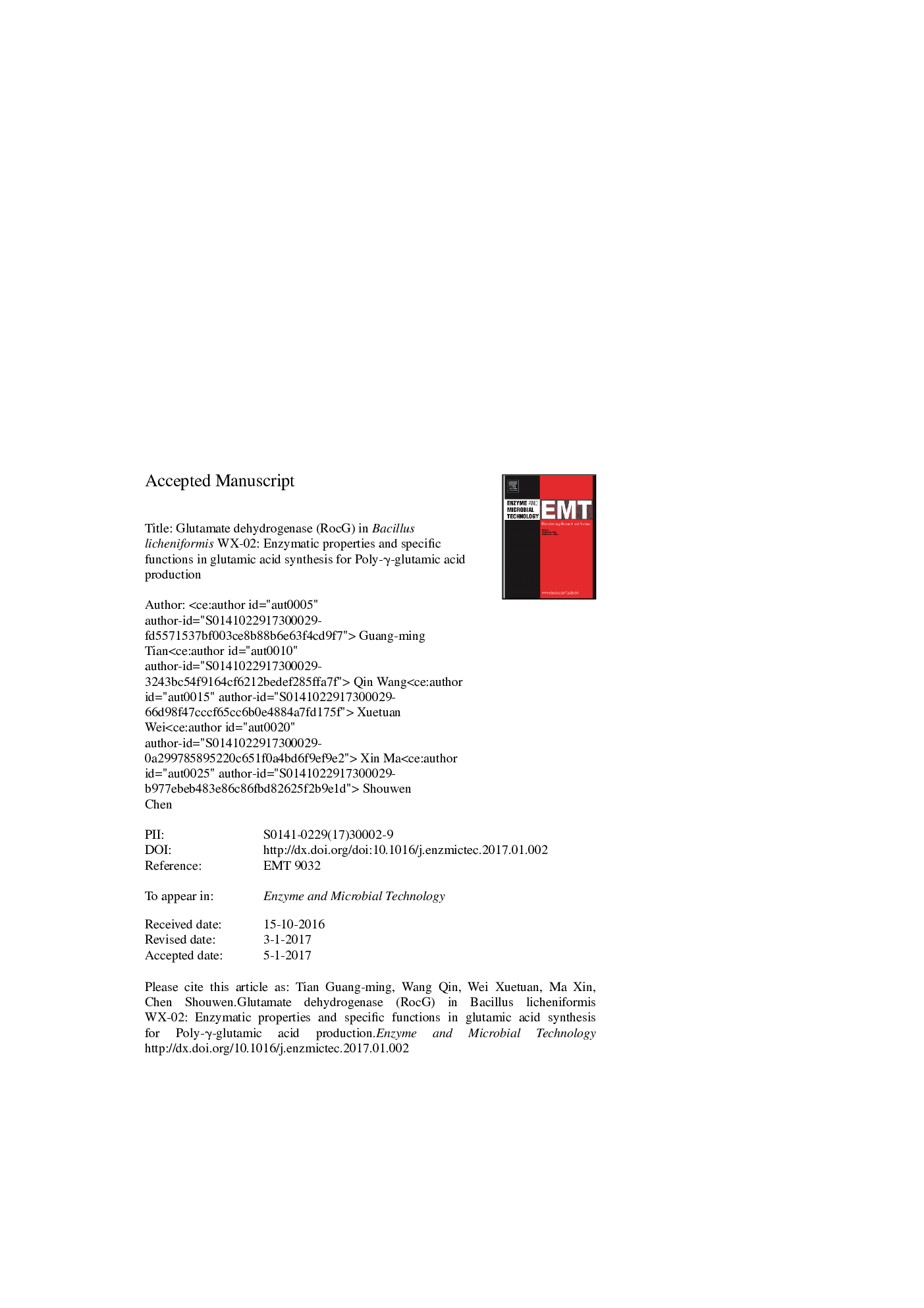| Article ID | Journal | Published Year | Pages | File Type |
|---|---|---|---|---|
| 4752826 | Enzyme and Microbial Technology | 2017 | 17 Pages |
Abstract
Poly-γ-glutamic acid (γ-PGA), a natural biopolymer, is widely used in cosmetics, medicine, food, water treatment, and agriculture owing to its features of moisture sequestration, cation chelation, non-toxicity and biodegradability. Intracellular glutamic acid, the substrate of γ-PGA, is a limiting factor for high yield in γ-PGA production. Bacillus subtilis and Bacillus licheniformis are both important γ-PGA producing strains, and B. subtilis synthesizes glutamic acid in vivo using the unique GOGAT/GS pathway. However, little is known about the glutamate synthesis pathway in B. licheniformis. The aim of this work was to characterize the glutamate dehydrogenase (RocG) in glutamic acid synthesis from B. licheniformis with both in vivo and in vitro experiments. By re-directing the carbon flux distribution, the rocG gene deletion mutant WX-02ÎrocG produced intracellular glutamic acid with a concentration of 90 ng/log(CFU), which was only 23.7% that of the wild-type WX-02 (380 ng/log(CFU)). Furthermore, the γ-PGA yield of mutant WX-02ÎrocG was 5.37 g/L, a decrease of 45.3% compared to the wild type (9.82 g/L). In vitro enzymatic assays of RocG showed that RocG has higher affinity for 2-oxoglutarate than glutamate, and the glutamate synthesis rate was far above degradation. This is probably the first study to reveal the glutamic acid synthesis pathway and the specific functions of RocG in B. licheniformis. The results indicate that γ-PGA production can be enhanced through improving intracellular glutamic acid synthesis.
Related Topics
Physical Sciences and Engineering
Chemical Engineering
Bioengineering
Authors
Guangming Tian, Qin Wang, Xuetuan Wei, Xin Ma, Shouwen Chen,
